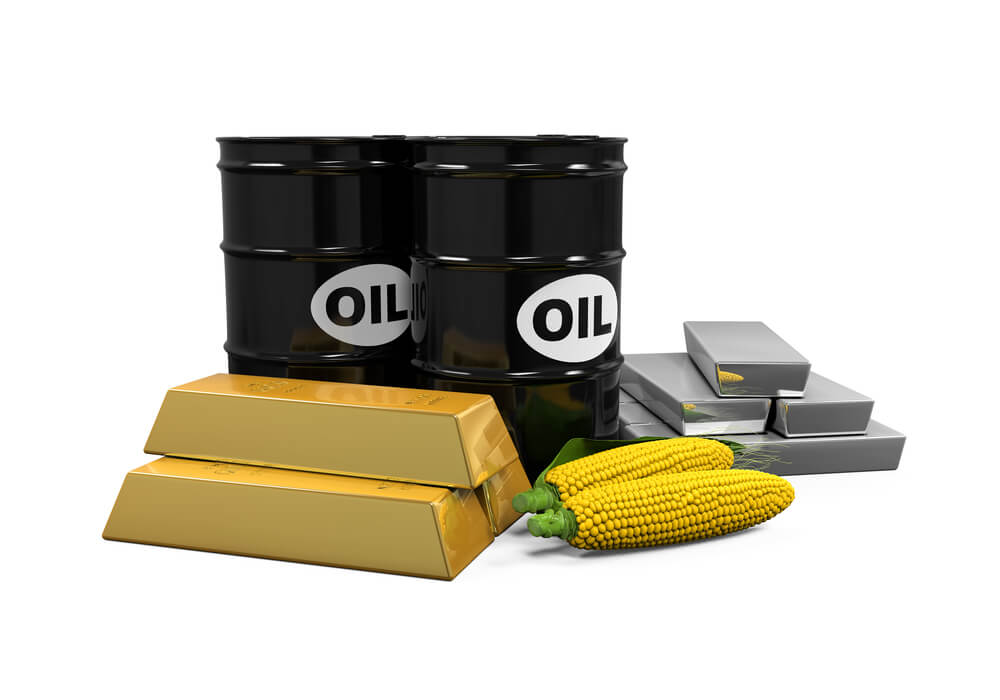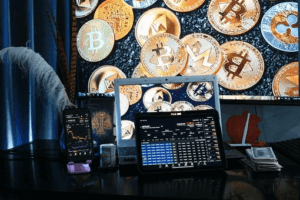The prices of commodities are determined by investors buying and selling contracts for the delivery of raw materials today and at a later date. When a certain commodity’s price for delivery today falls below the price for future delivery, you’re seeing a contango happen.
Contango Explained
Spot price refers to the current price of a particular commodity for immediate delivery, while a future price is what investors and companies pay for the delivery of a commodity at a specific date.
During a contango, the market sees a commodity’s future price trading higher than the spot price. That means investors prefer to bet on the commodity in the future than right now.
Such a situation eventually results in an upward-sloping curve of future prices in relation to the current spot price.
Moreover, contango takes place in the commodities and futures market, meaning it does not directly affect stock prices. Still, you can monitor the commodities markets to gain information that can help your stock trading.
For example, oil companies would welcome the news if oil has entered a sharp contango, while airlines won’t. You could then adjust your investments as necessary.
Common Causes of Contango
Supply/Demand Disruptions
A potential commodity shortage due to problems such as supply chain delays or bad weather ruining crops could prompt investors to choose higher future prices to be ready to counter the impact of those issues.
An unexpectedly abundant harvest may also lead to a contango, as the supply of a commodity exceeds its demand. As a result, spot prices decline until the additional supply disappears and futures prices return to the normal average.
Inflation
Future prices move up during high inflation. So if investors see that inflation is likely to continue surging, they could opt for high-priced futures with the expectation that the spot price will also go up at a future date.
Market Uncertainty
Considering the markets’ unpredictability, investors may decide to lock in future prices above the latest spot price instead of waiting for the actual price to trade higher than the future price. That move is usually taken with Volatility Index (VIX) futures.
Investors are often more uncertain about the stock market’s performance six months from now than the next day, which enables them to put more money into a hedge through long-term VIX futures.
Cost of Carry
Cost of carry is the amount an investor or company spends to maintain their holding on an asset. That also applies to commodities such as oil, metals, and grain, to name a few.
If a firm needs those commodities at a later time, it could be easier and cheaper for them to pay more for a future price than pay less at today’s spot price. That way, they don’t need to worry about the cost of carrying the physical asset.
Understanding Contango and Backwardation
While a contango makes a commodity’s future price higher than its spot price, a backwardation leads to the opposite outcome. When the market is in backwardation, investors are betting more on the spot price, resulting in a downward-sloping curve for futures prices in relation to the current spot price.
Backwardation rarely happens since prices typically increase on inflation and storage costs, although market conditions might cause a momentary one.
For instance, backwardation could occur if investors expect a commodity’s supply to rise in the future, significant weakness in demand, or deflation when prices are often tumbling because of a recession.
Contango usually happens in a bullish market, where most market players see a surge in prices and demand in the future. On the other hand, backwardation is a bearish sign as investors see a drop in prices and demand in the future.
Moreover, contango is a common occurrence compared to backwardation, where investors usually think long-term pricing will gain in the commodities markets.
Taking Advantage of Contango
You can have the opportunity to take advantage of contango if you’re an investor or consumer.
Investor
As an investor, think about what could be the commodity’s actual spot price against its existing higher future price.
If contango seems to have driven the market to push the futures price too high, you can sell futures at a higher price and then purchase them at a discount on the contract’s date.
For example, crude oil futures are priced at $80 a barrel, but you estimated the oil price at only $75 at that time. So if the trade goes in your favor, you’ll be able to make $5 a barrel.
Consumer
As a consumer, you see that the market thinks that prices will advance for a particular commodity. Therefore, you can save money if you spend now on that asset rather than waiting and doing it at a later time.
For instance, oil in a contango may help you find cheaper airfare today. Likewise, if lumber or other construction materials are in a state of contango, you could reduce your expenses on building and home renovations now instead of later when prices soar.
In addition, a contango may serve as a sign for businesses to acquire a considerable amount of commodities.
Commodity ETFs and Contango
Trading commodity exchange-traded funds (ETFs) is one way to profit during a contango. ETFs don’t hold physical assets as they would need huge storage spaces and have to deal with a high cost of carry.
Instead, they follow commodity prices by rolling over short-term futures contracts, selling existing positions as their expiration dates draw near, and then buying again at the latest price.
Using that method during contango could make the ETF lose money because rolling over contracts may require renewing the contracts at a higher price. Investors like you could turn a profit from short-selling ETFs, a strategy that can help you earn when the ETF’s price trades lower.
Keep in mind that price expectations in futures markets are forecasts. Therefore the actual result could still differ from what you and other market players expect.
Furthermore, while you can trade in the futures market because other investors anticipate continued contango, conditions can rapidly change. So if prices move down, you could incur some losses.










